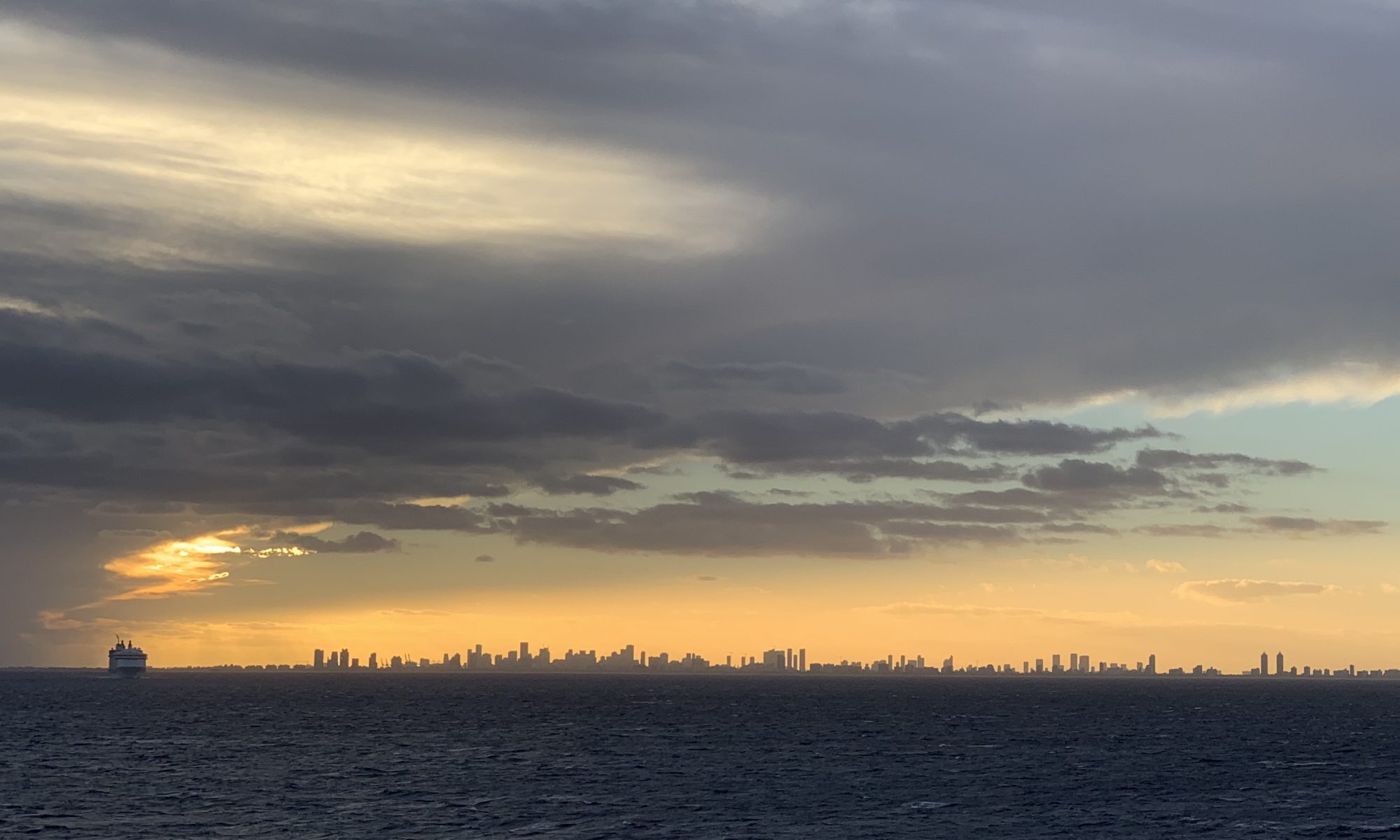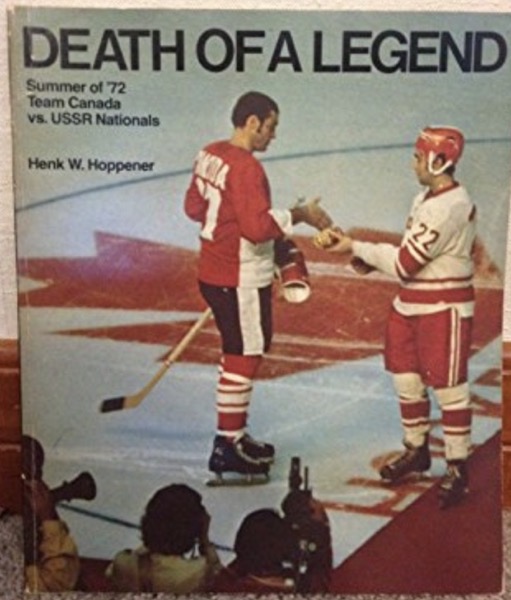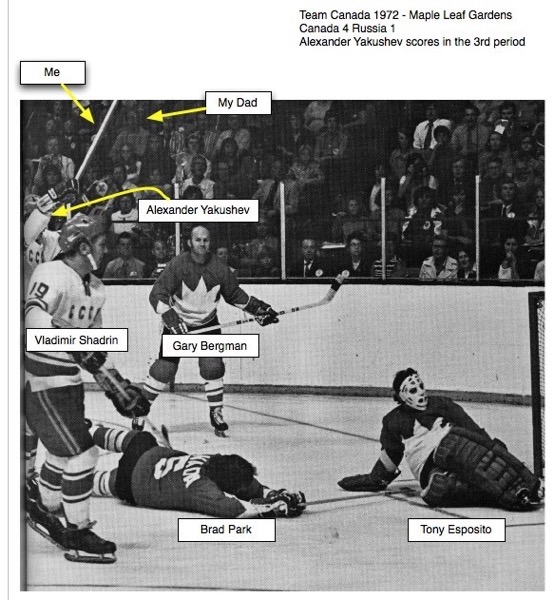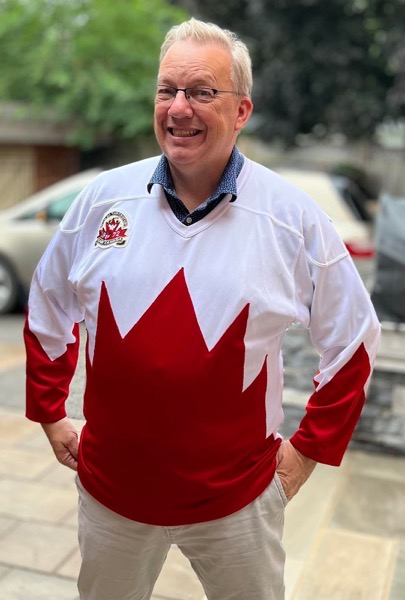I’ve been writing software for touch screens for a long time. iPhone and iPad today, of course – but 40 years ago, I helped build Videopress – a system from London, Ontario’s Cableshare that installed colour graphic touch screen systems in kiosks in shopping malls.

For a moment, shopping malls in London, Ontario were the center of the touch screen information universe.
It feels like all the information about this pioneering system has been lost in the sands of time. Although it only lasted a couple of years in the early 1980s, it was pretty amazing for its day. Let me write up something here for the benefit of future historians.
I gotta tell you, when I visit shopping malls today, I sometimes see touch screens and mall information systems and I think fondly of what we were doing way back then, and then I think “These systems today are not really 40 years better than what we were doing back then.”
plus I have a few stories.
Cableshare
My first job after graduating in 1981. I wanted to work for Cableshare – a small software company in London that was affiliated with the local Cable TV provider for two main reasons
- it was in London, and I could live at home
- maybe I would get free Cable TV.

(Don’t try to Telex me, I don’t think it still works.)
It worked out GREAT. I got to learn C, I got to build some cool stuff – at first, code for a cable tv monitoring system that detected fires or something in your house and called 911 – and eventually got in to graphics and touch screens, but most importantly, yes, I did get free Cable TV.
One day the boss showed me a touch screen fitted to a VT100 terminal, and one of these Telidon graphic decoder terminals, and asked me to fool around with it. Videopress was the result. I built some page creation software, the team built a booth and a distributed network to make it all work.
Cableshare’s Videopress – a big deal in 1982
The picture at the top is one of our first booths. I think this is at White Oaks Mall in London, Ontario. Or possibly Westmount Mall.

Anybody could come up and use the touch screens to search for mall information, check out the news and weather, and shop through an interactive gift guide (about which, more later.) Only hobbyists had home computers back then, and certainly nobody had a cell phone, so the idea that you could just touch a screen to find something out was revolutionary.
Especially because we all grew up with our mothers saying “Don’t touch the TV screen! You’ll get an electric shock!”
I remember bringing my grandmother out to the mall to use the Videopress booth. My grandmother! Nanny! Using a touch screen! Using software I wrote! Inconceivable.
So anyway,
technical stuff
The booth featured 4 terminals from Electrohome (and later Microtel) running a graphics standard called Telidon that had been promoted heavily by the Canadian government. Telidon defined a series of commands that you could send to a decoder – send a particular sequence of bytes, and a Telidon decoder would interpret those commmands and draw, say, a blue rectangle of a certain size, or text at a certain location. Slowly. It was a very clever, resolution-independent protocol where coordinates were all expressed as numbers between 0 and 1, so everything would fit on a terminal of any resolution. (I remember getting laughed at when I asked if we could get a 1024×1024 terminal. What are we, NASA? We don’t need some super thing like that, come on.)
Cableshare had fitted Elographics touch screens on top of these monitors. Another Telidon decoder showed a loop of graphics that you can see behind the booth attendant in the photo above. It all operated over serial lines, connected via an absurdly expensive Datapac network connection to … my memory is hazy here, but I think a Vax/VMS system back at headquarters. Initially this was all run from a tremendously underpowered CP/M computer buried in the booth, with a whopping 64K of memory to keep it all running.
Picture Painter
Artists back at headquarters would create all the content using an app I wrote called the Picture Painter. Perhaps you read this glowing review of Picture Painter in PC Magazine in 1984 –
Picture Painter is not as easy to learn as it should be. It takes a lot of nerve to charge $3,000 for software and then an extra $50 for inadequate documentation.
Tough, but fair.
Here’s a historic photo of a dorky looking guy showing off the Picture Painter app he created – and in case she ever goes searching for her own name, I’d like to say hello to my Cableshare colleague Debbie Shelton, who hasn’t seen me in 40 years either.
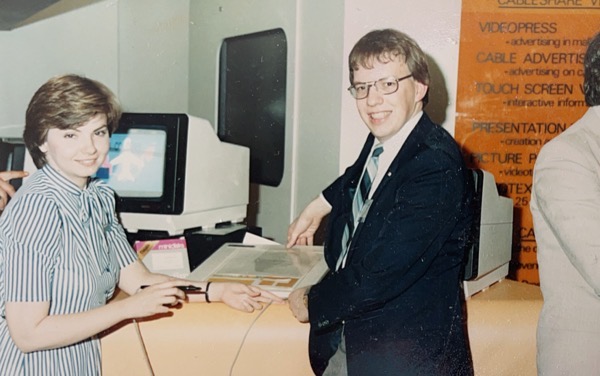
That’d be a Summagraphics tablet, with a custom overlay where you could draw and a grid of buttons across the bottom to trigger editing functions, and a Microtel Telidon terminal displaying the results.
I saved one of the overlays –

Telidon graphics were interesting in that they built up as the picture commands came in. it’d draw a circle, and a rectangle, and then it’d wait for more data to come in, and draw some text, and pause again and … It’s hard to believe how slow this was in retrospect but the effect of the pictures gradually appearing was kind of interesting.
so what did you see on the screen at the mall?
I really wish I’d taken some more pictures of what it all looked like. You’d have a menu you could touch through, for mall information, maps to the stores, the latest news and sports scores, and more. It was a clumsy menuing interface because the touch screens of 1982 were pretty limited. The first ones we used had something like twelve specific zones you could touch – and that was it. Twelve little nondynamic islands, and you had to create your content so that the touchable things were under the specific zones.
The Eaton Centre
Our first two installs were at White Oaks and Westmount Malls, in London. Cableshare had partnered with the local newspaper, the London Free Press, to build a joint venture called Videopress and they’d put Russ Demchuk in charge of the project and I’d just like to drop his name again as someone I haven’t heard from in ages.
while I’m at it a few more names of Cableshare people. This team taught me a lot. Frank Mandarino! Tom Martin! Tom McGill! Chris Reinkeleurs! Al Dinelt! Rick McNorgan! Herb Woods! Terry Pocock, rest in peace, company president who really spearheaded the whole thing. And Joe I Forget Your Last Name But You Were Very Nice To Me And I’m Sorry I Complained About One Of Your Functions Delivering Unsorted Data When I Really Wanted Sorted!
anyway. We honestly thought every shopping mall in the world would want some of these kiosks. Many of them came to London to see it in action, and the owners of the Eaton Centre – Canada’s largest mall, in downtown Toronto – decided to dive in, in partnership with the Toronto Sun.
It was all-hands-on-deck to get ready for that huge install. There was going to be a large Videopress booth smack in the middle of the mall. Our team of artists started using Picture Painter to draw – tediously – walking maps from the booth’s location to every store. 300 individual maps. I think they had animated dotted lines showing the route. Fancy stuff for 1982.
Except when the booth was installed, it turned out to be on the opposite side that we were expecting, and all the maps were upside down and had to be redrawn. Oops.
Today when I visit the Eaton Centre, I walk past the spot where the booth used to be, and I get pretty nostalgic….
Sports Scores
One piece of content I remember is a fancy graphic showing Wayne Gretzky’s quest for 100 goals. He was on a tear that season and it really looked like he might score 100; the team built an impressive page with a thermometer of sorts showing his progress, and every night it’d be updated, and there was going to be some spectacular thing happening when he hit 100.
Wayne finished the season with 92 goals. sigh.
The Gift Guide
The sales people were signing up vendors in the mall to participate in the Gift Guide. We had a coupon printer in the booth – using that ancient greasy ATM paper you’ve probably forgotten – and somebody had the idea that we should print special discount coupons that would direct people to participating retailers.
Somehow this morphed into the Christmas Gift Guide. A database driven thing, you’d answer a few questions on the touch screen …
Welcome to the Gift Guide!
- Who are you shopping for?
- What are they interested in?
- What’s your budget?
My dad.
Photography.
$75.
and the interactive database would search through the huge list of participating merchants, and recommend something and print a coupon.
Except … The sales people had difficulty filling all the slots. Most of the time, the gift guide came up with a useless recommendation like Nothing for that combination. Try again.
shoes
One day my manager Bruce Grayson came to me and said “Steve, this doesn’t look good you’ve got to make it return something every time.”
We thought about it for a moment, looked over the list of participating vendors, and decided we were going with Shoes. The perfect Christmas gift! Your dad is interested in photography? Why not buy him some shoes? Have you ever seen a photographer that didn’t have shoes?
I don’t think the Gift Guide lasted too long.
spinoffs
the inuit circumpolar conference
Cableshare got government money somehow to install a few systems at the Inuit Circumpolar Conference, which I believe was in Iqaluit, and I am still annoyed that I didn’t get to go. But I did manage to use Telidon’s custom font capability to design an Inuktitut font so content could be presented properly. I remember buying a sheet of Letraset dry-transfer letters that were in that font – all magical circles and triangles – and tediously creating a digital font variant. I hope people liked that.
buick
We modified the system so that it could display video from an attached laserdisc player, and somebody somehow got Buick interested in this as a kiosk for car dealerships. I remember going to see the first install at Buick HQ in Michigan. A standalone touch screen system was there to tell you about the new 1984 cars – but nobody was touching it. Nobody knew that you could actually TOUCH a SCREEN.
Someone had the bright idea to put a helpful sign next to the screen. Touch Here to learn about Our New Cars!, it said.
You can imagine where this is going. I remember seeing somebody touch the SIGN, four or five increasingly frustrated times, and of course nothing was happening. He got mad, and actually hit the real touch screen with his fist while walking away. Stupid thing. Doesn’t work.
Then, of course, the touch screen noticed an actual touch, and beeped, and started playing videos from the laserdisc player. I think the customer came back for a look.
the finger painter
Also I managed to put together a touch-screen based program that let you create graphics without the need for a keyboard or a graphics tablet! We called it the Finger Painter. It was a fun little experiment, and somebody at the Ontario Science Centre thought it was pretty cool and to my great delight, they installed it there and anybody could walk up and doodle a little picture with their finger. Or maybe it was Ontario Place. Or the Ontario Science Centre at Ontario Place. For a few months there, it was all the rage, even though (I can’t believe this memory is coming back) we kept having issues with flow control on the RS-232 line between the computer and the decode.
aftermath
This was huge in 1982 and 1983. Huge! Nobody had seen anything like it. Interactive touch screen information systems that anybody could use. Anybody! Just come to the mall and try it out!
I really wish I’d taken more pictures – here are a few that I do have.

Russ Demchuk and Bruce Grayson check out the first install.
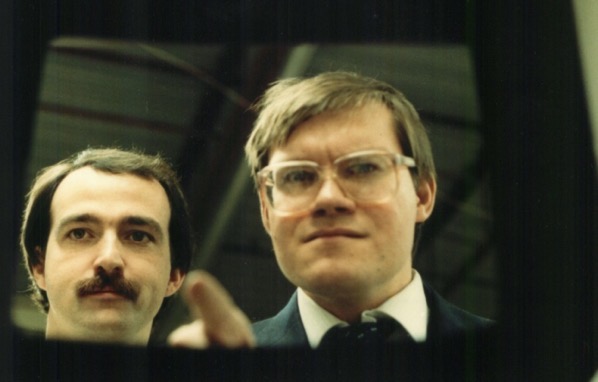
Frank Mandarino and Bruce Grayson try to use the Gift Guide, as seen from inside the terminal
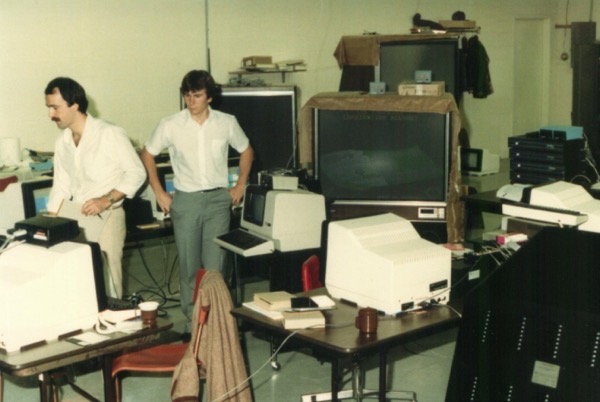
Frank, and Tom Martin, in the lab back at Cableshare
and maybe my favourite
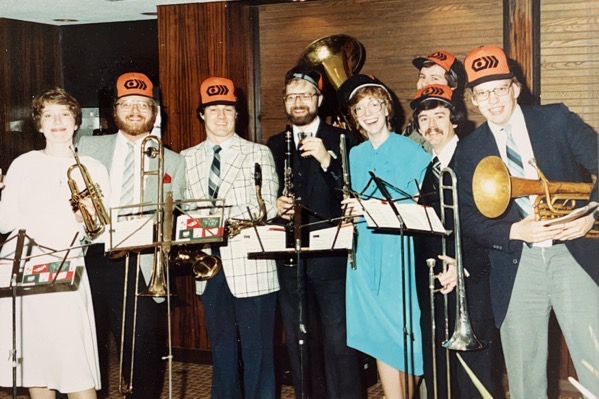
the Cableshare Marching Band, from the 1982 Christmas party.
In 1983 I went back to grad school at Waterloo, and Cableshare eventually pivoted to doing some sort of interactive thing over cable and phone lines and got acquired by another telco, and the booths faded away.
But it was a pretty amazing couple of years.
UPDATE!
I recently stumbled across this CBC video report from 1985 on Cableshare’s pivot to “Touch-n-Shop”, a system for shopping on your TV, controlling it via your touch-tone phone. This used the same Telidon graphics and Picture Painter software I’d built, but reorganized to run on your home TV. Cableshare was convinced they were on to something with this shopping-at-home idea, and JC Penney swooped in.
It’s great to see my former boss, Cableshare president Terry Pocock, in this. He took some big chances. I was only there a couple of years, but I learned a ton, and I have some great memories. Thank you, Terry.
Watch here:
https://www.cbc.ca/archives/the-little-company-that-promised-shopping-via-the-tv-in-1985-1.5755825
